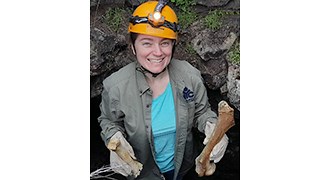Last updated: March 7, 2025
Article
How “Hot” Radioactive Fossils Tested One Park’s Safety Tech
Some fossil bones emit huge amounts of radon, a cancer-causing gas, so staying safe when storing or studying them is a real challenge. Hagerman Fossil Beds National Monument found ways to overcome the problem through upgraded safety technology, but its story is a cautionary one.
By Karina Rapp
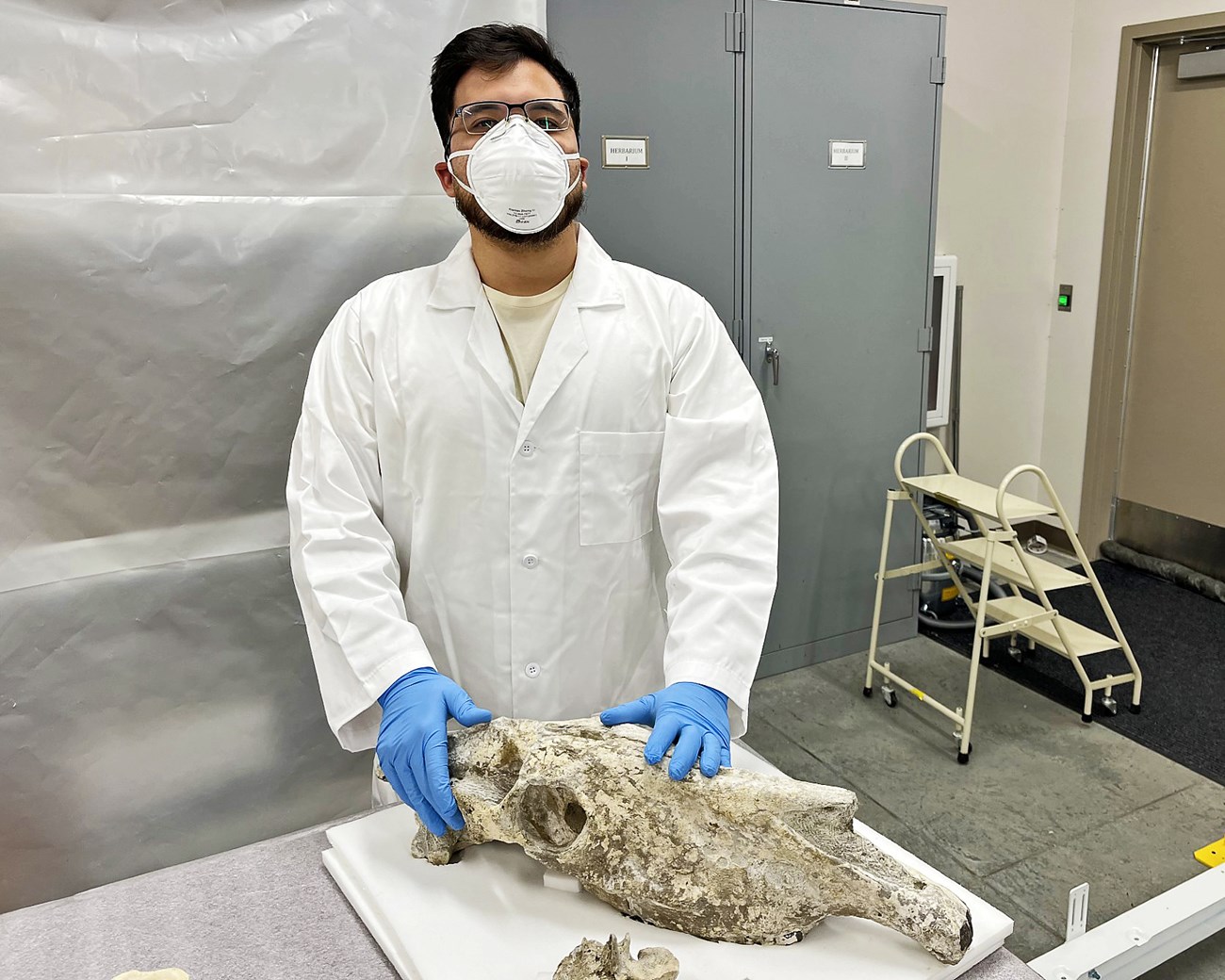
Image credit: NPS / Jared Infanger
Hagerman Fossil Beds National Monument is known for its rich assemblage of mammal fossils, including the famous Hagerman Horse, an ancestor of the modern horse.
It also boasts other extinct animals like saber-toothed cats and bone-crushing dogs. They represent a time—the Pliocene Epoch—when the now dry Idaho landscape was filled with wetlands, fields, and forests. But some of these fossils also emit high levels of radon, a radioactive gas. That’s the same colorless, odorless, cancer-causing gas sometimes found in the basements of people’s homes. It can build up in structures housing the fossils, exposing people who study or work there to radon. In 2021, the monument moved its fossil collection to a new building designed to hold radioactive fossils. The following year, radon levels were still exceptionally high. Hagerman subsequently revised its mitigation technology to reduce radon to acceptable levels, but the park’s tale is a cautionary one for other museum collections.
A Widespread Concern
Because of how fossils form, it’s not uncommon for them to be radioactive, and fossils that emit radon aren’t limited to the monument. Vincent Santucci, Paleontology Program coordinator for the National Park Service, said the agency manages three well-known geologic formations with radioactive fossils: the Upper Triassic Chinle at Petrified Forest National Park, the Upper Jurassic Morrison at Dinosaur National Monument, and the Pliocene Glenns Ferry at Hagerman Fossil Beds National Monument. But radon emissions can occur in fossils collected throughout the world.
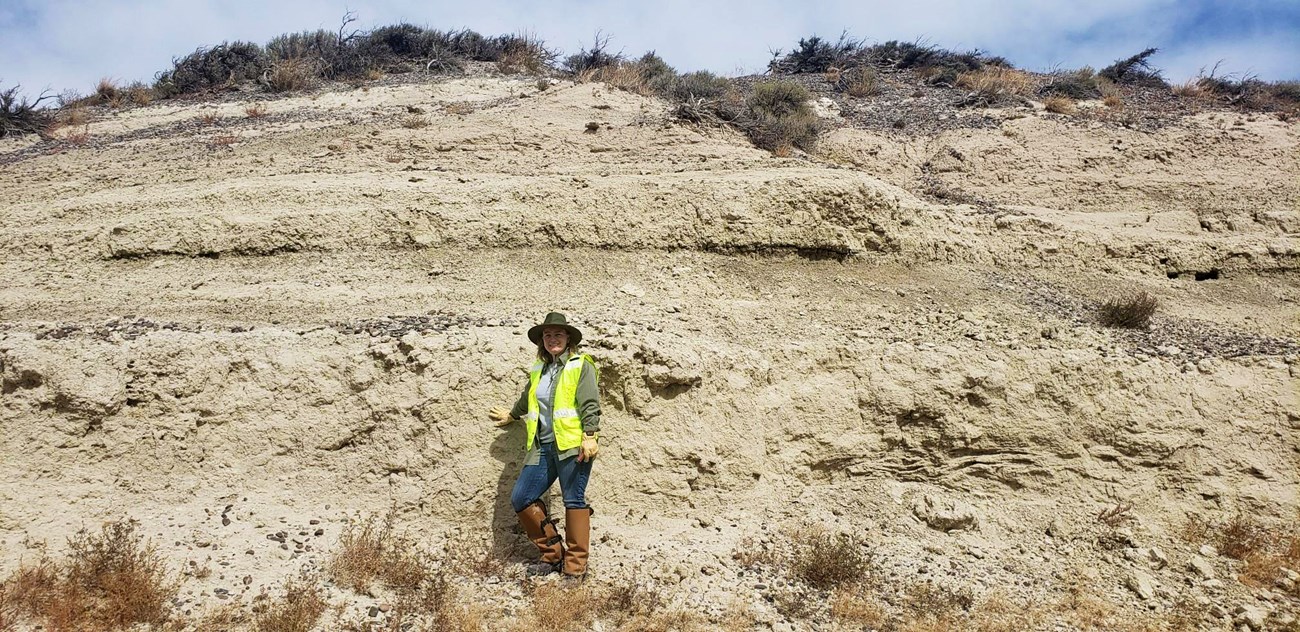
Image credit: NPS / Alex Kim
He was “pretty shocked” to learn that radon mitigation was not at all common among paleo collections.
Most of the fossils at the Arizona Museum of Natural History, for example, are from the Gila Group, especially the Pleistocene-age 111 Ranch Beds, found in 1933, many of which are radioactive. The museum manages radon in their collections through constant monitoring, total air replacement every eight hours, and extra safety precautions for fossil dust. They’re currently looking into how to further mitigate radon accumulation in the museum vault. Gavin McCullough, the museum’s paleontology collections manager, believes there’s a lot to be learned and shared about radon safety. When he gave a talk on collection radioactivity in 2008, he was “pretty shocked” to learn that radon mitigation was not at all common among paleo collections. “Many collections were in need of it,” he said, and “were looking for avenues of support to make their collections safer.”
The National Museum of Natural History, a unit of the enormous Smithsonian Institution, conducted the first excavations at the Hagerman Fossil Beds in the late 1920s, and it has several complete Hagerman Horse specimens. Researchers have been using those fossils to study the four-million-year evolution of the horse. The museum has also been excavating radioactive fossils from the Jurassic Morrison Formation since the 1880s. It employs full-size cautionary labels for cases containing radioactive contents and circulates air via HVAC systems. Staff and visitors wear dosimeters when working with the collections. Museum workers leave radioactive cases ajar 24/7 to prevent gas buildup and open them fully and vacate the area for 20 minutes before using them.
"We’ve probably invented the wheel several times in individual collections."
Amanda Millhouse, deputy collections manager of Vertebrate Paleontology at the museum, said, "comprehensive studies are lacking that address some of the variables (e.g. collection size, storage for oversize, segregation, etc.) or provide realistic solutions for collections without the resources (time, funding, staff, experts, equipment, etc.) to execute the ideal storage conditions and/or monitoring systems. We’ve probably invented the wheel several times in individual collections.”
Santucci, though, is generally positive on how collection staff in the National Park Service are handling radon. “I think we’re doing a fairly good job,” he said. “There are only a couple of parks that undertake fossil preparation. Each of these park prep labs adhere to NPS policy and practices and OSHA requirements.”
Not Your Basement’s Radon
Radon appears in people’s basements because of the kind of rocks and soils present in the area. The system to replace the air in your basement is like what museums use, but the presence of radon in a museum collection raises concerns not shared by homeowners. For example, museum workers must avoid radioactive dust from crumbling fossils by using personal protective equipment and keeping their workspace clean.
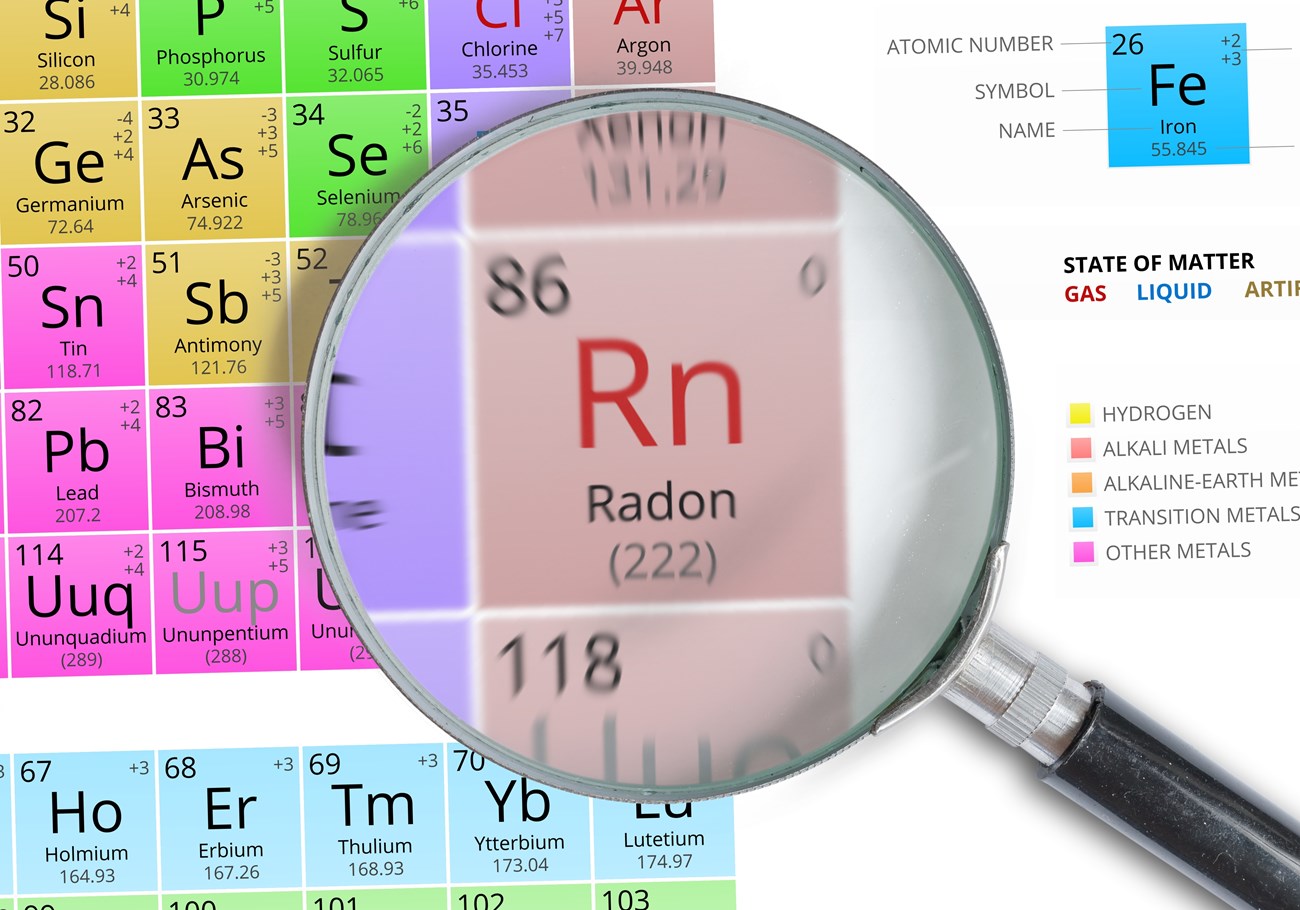
Image credit: vchalup - stock.adobe.com
Radon occurs naturally in the Hagerman Fossil Beds where many of the best specimens are found, such as at Hagerman Fauna Sites, a national natural landmark. It off-gasses from the rocks and fossils themselves continuously. Many fossils from the Hagerman Fossil Beds are especially “hot.” In spring 2021, the park moved the fossil collection into a new storage facility designed to hold radioactive fossils. It had a special vacuum port system for mitigating radon cabinet by cabinet. But the park didn’t know if the facility was performing as it should.
Inside cabinets, the meters maxed out their reading capabilities at 500-plus picocuries per liter, more than 100 times the EPA’s action level.

Image credit: NPS / M. Lawrence
The following year, I measured radon levels in the collection and found them exceptionally high. Radon was leaking from closed cabinets into the building, including the research office where staff worked. Building levels were reaching up to 6.3 picocuries per liter of air, which was above the Environmental Protection Agency’s recommended action level of 4 picocuries per liter.
Inside cabinets, the meters maxed out their reading capabilities at 500-plus picocuries per liter, more than 100 times the EPA’s action level. The building’s vacuum port system proved ineffective at removing such high amounts of radon.
Getting “Bedrock” Data
There’s no universal standard or strategy for mitigating radon in a museum fossil storage setting. So, as Millhouse indicated, individual collections like Hagerman’s sometimes feel obliged to develop solutions on their own. I did a series of experiments to establish baseline values against which to measure future changes and to identify the best equipment and mitigation strategies for our situation. I adhered to risk management procedures recommended by the federal Occupational Safety and Health Program and the National Park Service Museum Handbook in my study design and in my work.
I used two, low-cost radon monitor types, EcoSense RadonEye and Airthings ViewPlus, to measure long-term baseline radon emissions inside and outside the cabinets. Unlike older models used by park staff in the past, which took measurements every 24 hours, these meters took measurements every 10 minutes to 1 hour and were more accurate. They were also safer to use. ViewPlus, for example, read levels inside the cabinets remotely, via a tablet app and a Wi-Fi connection, reducing operator exposure to radiation. I gathered detailed baseline data for every room in the building and every cabinet housing fossils. These data were the “bedrock” of my project.
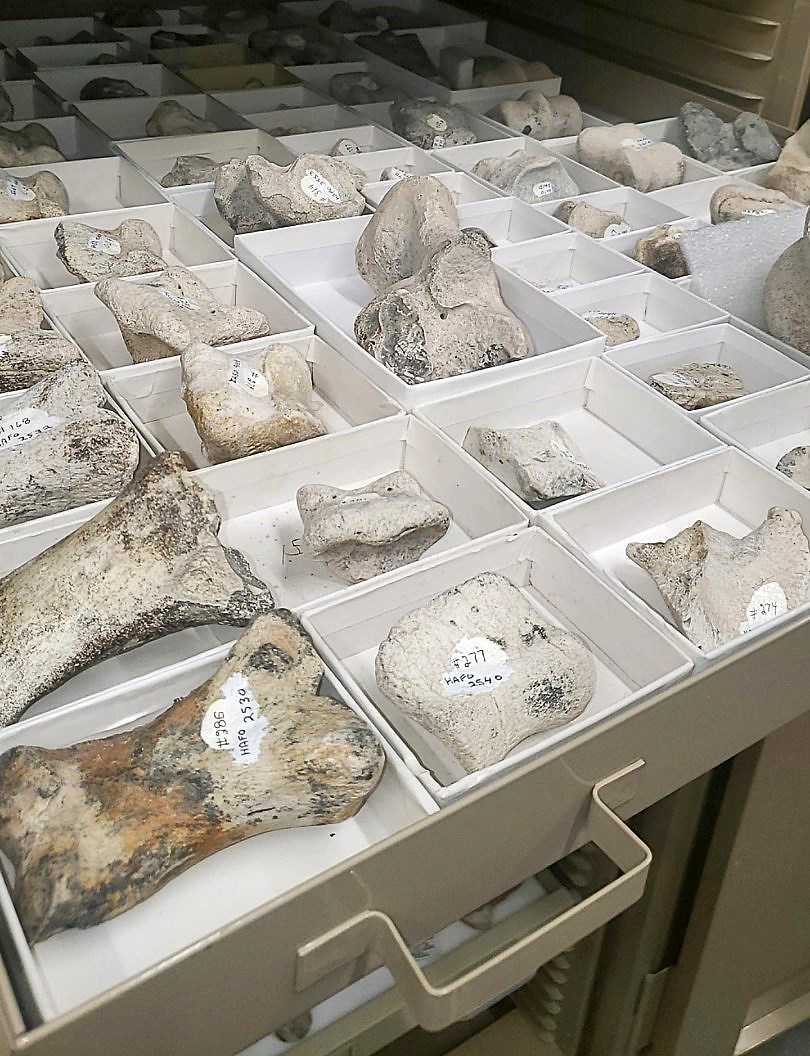
Image credit: NPS / Karina Rapp
The building’s baseline radon levels (i.e., prior to ventilation) reached as high as 6.38 picocuries per liter. I experimented with different ventilation methods to reduce radon gas in the building and cabinets. I compared radon levels in the building after partially venting room air versus totally replacing room air by running the HVAC system 24/7. I compared running the cabinet vacuum port system for two minutes before opening the door, per the original design specifications, to running the HVAC 24/7 with the door open until radon levels measured below four picocuries per liter.
I stored taxonomically similar specimens together to isolate the "worst offenders."
Sometimes it’s best to disperse radioactive specimens throughout a collection because levels can increase if they’re stored together. Storage solutions vary, however, depending on the situation. In the case of Hagerman, most of the fossils are radon-bearing, and many of its fossil sites are species-specific. This means fossils of certain species (like the horse) produce more radon than others. I stored taxonomically similar specimens together to isolate the "worst offenders" and ensure that more of the collection was accessible.
After I rearranged the collection, the number or cabinets with acceptable radon levels increased by 28 percent. Cabinet baseline radon levels ranged from 0.4 picocuries for fossils like rodent teeth to over 1,000 picocuries per liter for most of the horse fossils. Though the cabinets with horse fossils had very high radon levels, the reorganization made over 20 fossil species more accessible, including beavers, birds, shrews, snakes, and plants.

Image credit: NPS / Karina Rapp
Continuous air replacement was the most effective strategy for reducing radon in the building and the cabinets.
Continuous air replacement was the most effective strategy for reducing radon in the building and the cabinets to acceptable levels. After the HVAC fan operated for 24 hours, building levels reduced by 40–63 percent, never exceeding 4 picocuries per liter. The vacuum port system proved unable to sufficiently vent the radon from any cabinets with levels higher than 6 picocuries per liter. But the HVAC fan was able to reduce even cabinets measuring 600 picocuries per liter to 3 picocuries or less over a 24-hour period.
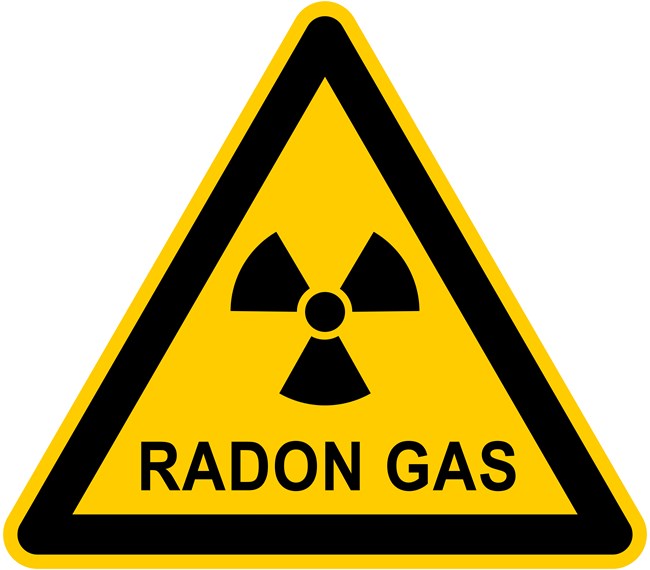
Image credit: fotohansel - stock.adobe.com
Simple Measures for Safety
My research resulted in safer protocols for working with Hagerman’s fossil collection:
Monitoring and maintenance:- Leave HVAC system fan running continuously.
- Label each cabinet with its danger level and required venting time based on average long-term radon levels.
- Check room radon level, temperature, and humidity once per week, and take safety measures if they’re outside acceptable limits.
- Use appropriate personal protective gear when working with radioactive fossils.
- Clean hands and workspace afterwards.
The full Hagerman fossil collection radon study includes sample safety documents to supplement a radon program.
The park is also developing a new energy recovery ventilation system for the fossil collections building, similar to the one used by the Arizona Museum of Natural History for its radioactive fossil collection. This will be separate from the HVAC system, which controls indoor climate. The new system should reduce energy consumption, improve indoor air quality, and reduce ambient radon to recommended levels.
A Cautionary Reminder
The biggest takeaway from my research is that total air replacement is highly effective at mitigating radon levels. When run continuously, even the HVAC system fan at Hagerman reduced ambient radon levels to less than two picocuries per liter. But, like Hagerman, museums with radioactive fossils could benefit from a separate, modern, energy recovery ventilation system. Researchers and museum workers can handle even “hot” fossils, with far less risk, if safety procedures like these are in place. Hagerman’s story is also a reminder that continued monitoring is an integral part of any successful radon-reduction strategy. Sharing mitigation strategies with the wider museum community can help others avoid similar situations when they develop their own safety programs.
